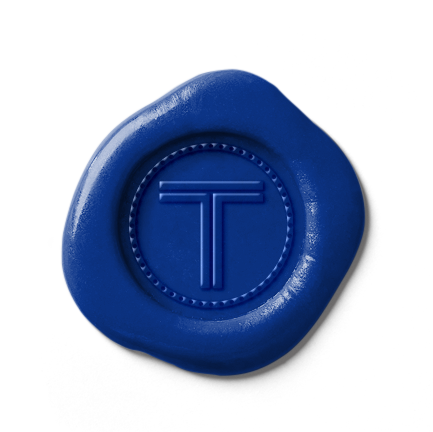From Vineyard to Bottle
The Dry Farm Wines Family helps with an Italian Natural harvest
The Basics of How Pure Natural Wine Is Made
Humans have been making wine for more than 9,000 years.
Experts believe the first wines ever made came from Jiahu, an ancient civilization in Northern China. Farmers would crush grapes, leave them in large ceramic pots, and come back weeks or months later to find fermented wine[*].
Now, 9,000 years later, it’s remarkable how little the Natural Winemaking process has changed. There have been plenty of innovations — preservation techniques, more exact fermentation, and so on — but in principle, Natural Wine still comes down to two humble ingredients: grapes and time.
From such simple raw materials, winemakers have learned to produce the beautiful kaleidoscope of flavors and textures present in Natural Wine.
Winemaking can be broken down into five simple steps:
Terroir. All the aspects that influence how a grape is cultivated in the vineyard.
Harvest. How grapes are grown and when they’re picked.
Fermentation. Allowing native yeasts and bacteria to convert sugars to alcohol.
Racking. Removing sediment from the wine (or intentionally leaving it in).
Bottling and aging. Letting the wine develop until it’s ready to drink.
It’s within these steps that winemakers express themselves. A vineyard on a steep hill or next to a river, a later harvest instead of an earlier one, a longer period of contact between grape juice and its skins, stems, and seeds, a few days shorter fermentation — all these seemingly small decisions lead to the extraordinary range of styles and flavors in wine.
Let’s take a closer look at how wine is made, from vine to bottle, and how each stage in the process affects a wine’s development.
Terroir
Terroir is the unique environment in which grapes grow and how that environment influences the wine they become. For example, wine grown in mineral-rich soil (such as in Puglia, at the very southern tip of Italy), may have more minerality: tasting notes of briny seashells or wet stone.
Many environmental factors encompass terroir. It’s a fascinating example of how a vineyard’s surroundings can influence wine before the grapes have even finished growing.
Harvest
A major part of a wine’s character depends on how its grapes were grown and harvested.
Harvest season is between August and October for the Northern Hemisphere and February and April for the Southern Hemisphere. In the time leading up to those months, winemakers consider a number of factors that affect their grapes: sunlight, rainfall, outside temperature, and more. Natural Wine grapes are picked by hand, using nothing but shears and baskets.
It can take many years on a vineyard to learn when to harvest, and it’s often the most challenging time for winemakers. Their grapes are largely in the hands of Mother Nature, who imparts her unique influence on each vintage of wine.
Fermentation
After harvest, grapes are taken to the wine cellar and fermentation begins. Cellar workers crush the grapes and transport them to large, open-air containers.
Crushing the grapes exposes the sugars and pulp to wild yeasts living on the grape skins. The yeasts begin to eat the sugar, fermenting the grapes and starting their journey into becoming wine.
Open-air fermentation typically lasts anywhere from four days to two weeks. After that, many wines (particularly red wines) undergo a second stage of fermentation called malolactic fermentation. They’re transferred to a tank for three to six months, to allow bacteria to convert malic acid, which has a very sharp, acidic taste, to lactic acid, which is much mellower and has a pleasant mouthfeel.
Racking
Once fermentation is finished, winemakers move on to racking their wine.
Racking involves transferring wine from one container to another, leaving behind sediment that has dropped to the bottom of the tank during fermentation. Racking makes wine less cloudy.
During this stage, some commercial winemakers may use clarifying agents to make their wine totally clear. However, Natural Growers avoid clarification and instead allow some natural sediment and cloudiness to stay in their wine.
You may occasionally find bits of yeast or other solids in the bottom of a Dry Farm Wines bottle. The sediment is harmless and is a sign of wine made in harmony with Nature.
Aging and Bottling
After racking, wine comes to the final step in the winemaking process: aging.
During aging, winemakers move their wine to new containers — typically oak barrels or stainless steel tanks — and let it sit for anywhere from a few weeks to multiple years. Longer aging softens the intensity of tannins in the wine and develops a richer, rounder flavor profile. Shorter aging keeps the wine crips and brings forward fruitier, more delicate flavors.
When the wine is ready, bottling begins. Winemakers can choose to bottle with natural cork, which lets a small amount of oxygen into the wine over time and continues to develop its flavor. They can also bottle with a metal cap, which keeps the wine more stable.
Every year, winemakers face dozens of small decisions about how to make their wine. It’s in these choices that the art and science of winemaking flourishes. Over time, winemakers learn to predict how each little choice will affect the final product. As they build knowledge and develop intuition, their final product becomes more precise, and they begin to create extraordinary pure Natural Wines.







